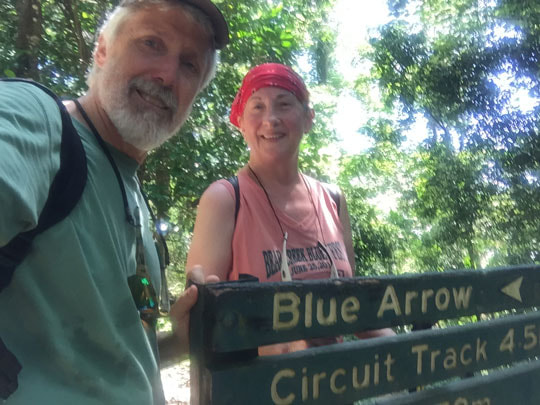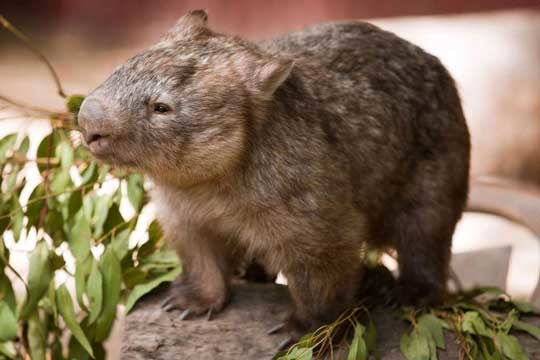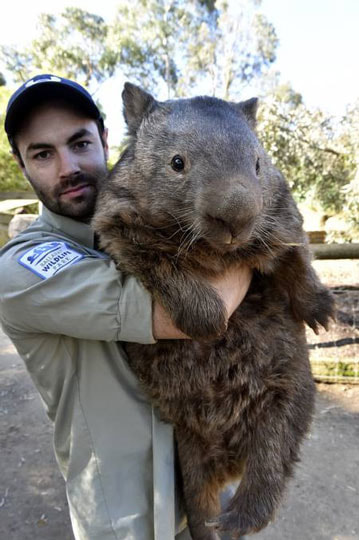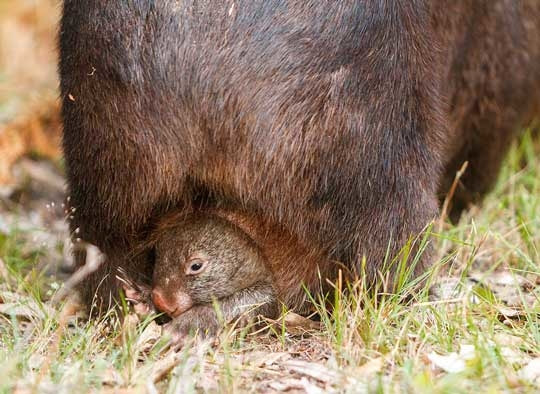|
Trish and I are now wrapping up our Australian adventure. We spent a few days in Cairns, and one of the first orders of business was to hike the Blue Arrow trail at Mt. Whitfield Conservation Park. Why? Because this trail, as well as the last living cassowary to roam Mt. Whitfield park, were the inspiration for the title of my novella, Blue Arrow. Trish and I hiked this trail 23 years ago on a previous trip, back when the last Mt. Whitfield cassowary (also named Blue Arrow) was still alive. By the way, if you haven't read Blue Arrow, you're missing an important piece of the Diffusion series. It's an intriguing science fiction story, and it's a love story unlike any other. If we look a little sweaty in this photo, it might be because we had just come from cold April days in Missouri to the warm tropics. Or... maybe because we aren't as young as we were 23 years ago! Usually, I feature animals that appear in my books. But since Trish and I are currently exploring the northeast corner of Queensland, Australia, I've chosen an Awesome Animal that is an Australian icon. Nope, not a kangaroo... the WOMBAT! So what the heck is a Wombat? Besides being one of the coolest-looking mammals ever, wombats are chunky, muscular marsupials that live mostly in southeast Australia (although there is an isolated population in Queensland). They are diggers. They use their powerful forelimbs to dig extensive burrows. And they are herbivores, eating grasses, other herbaceous plants, and plant roots. It seems to me that they are the Australian marsupial version of the woodchuck (a large, chunky rodent that is common in the US). There are three species of wombats: the northern hairy-nosed wombat, the southern hairy-nosed wombat, and the common wombat (also known as the bare-nosed wombat). Amazing facts about Wombats Wombats like to dig. In fact, they can be destructive (as woodchucks can be in the midwest US). In 1906, the Australian government declared wombats to be pests and encouraged people to kill as many as they could. Bounties were even paid for the skins. Although that practice has stopped, the future of these creatures is uncertain, due to land clearing, habitat competition with cattle, roadkill, and other factors. The hairy-nosed wombat is almost extinct, with only about 100 individuals remaining in one National Park in Queensland. Wombats might be larger than you think. The common wombat typically weighs between 32 and 80 pounds (14 to 36 kg). The largest known wombat was Patrick. Patrick was a common wombat that lived its entire life at Ballarat Wildlife Park in Victoria, Australia. Patrick lived to 31 years of age and weighed a whopping 88 pounds (40 kg). Patrick was so popular that he had a Facebook page with 56,000 followers. Unfortunately, Patrick died in April of 2017. See photo of Patrick below. Wombats reproduce slowly. Females give birth to only one baby (called a joey) every two years. Like other marsupials, the babies develop outside the body instead of inside. A wombat joey is born the size of a jellybean, and then it crawls to the mother's pouch and attaches to a nipple. In the pouch, it will grow for six months before it even detaches from the nipple and peeks out at the world. It stays in the pouch for up to 10 months, and it continues to return to the mother to feed for up to 15 months (which I suppose is why they have only one baby every two years). Now, here's the really unusual part. You know how kangaroo pouches are on the front side of the mother kangaroo? Well, wombat pouches open up to the rear. This is to prevent dirt from filling up the pouch as the mother digs. Wombats produce cubic poop. Yep, you read that right. They poop out square poo. Why? Well, it has to do with how wombats use their poo. Wombats are territorial, and they mark their territories by leaving chunks of poo in carefully-selected places. Often they leave chunks on top of rocks and logs so that other wombats will find them more easily. So... it is thought that the poo is square so that it will not roll out of place. If the poo rolls out of place, the other wombats may not find it, and then the wombats will get into a nasty fight. And no one wants that to happen, right? Check out this brief video that explains wombat square poo. Wombats have big, tough butts. The reason why? because of dingoes, foxes, and Tasmanian devils. These are the main predators of wombats. And when a wombat is being attacked, it will dive headfirst into a tunnel and block the opening with its rear end. Wombats have really thick, tuff skin on their butts. So tough, in fact, that predators can rarely chew through it. The wombat's rather large rear end has become somewhat of a cultural thing. For example, a statue called Fatso the Fat-Arsed Wombat became the "unofficial" mascot of the 2000 Sydney Olympics. Fatso appeared on top of a pole outside Sydney's Stadium Australia. See photo below. So, the wombat deserves a place in the B.A.H.O.F. (Blastastic Animal Hall of Fame). FUN FACT: The word Blastastic is a mash-up of fantastic and blast. As in, "I had a blastastic time last night!" I'm not sure when this term was first used, but there is a computer game called Blastastic Love Story, and I found several other references to the word. That's enough to convince me the word is real. Besides, I like the way it sounds. So blastastic is another way to say awesome! Photo Credits:
Wombat on log - Australian Reptile Park Patrick, the oldest Wombat - Reddit Pics Wombat Joey in Pouch - San Diego Zoo Fatso the Fat-Arsed Wombat - Wikipedia
2 Comments
Donna Mehl
5/10/2018 07:30:00 am
I enjoy reading your Blog so much. Thank you for being my eyes in places I cannot be.
Reply
Stan
5/13/2018 05:00:11 am
I'm glad you enjoy my posts, Donna! Thanks for reading.
Reply
Leave a Reply. |
Stan's Cogitations
Everyone needs a creative outlet. That's why I write. Archives
July 2024
|






 RSS Feed
RSS Feed